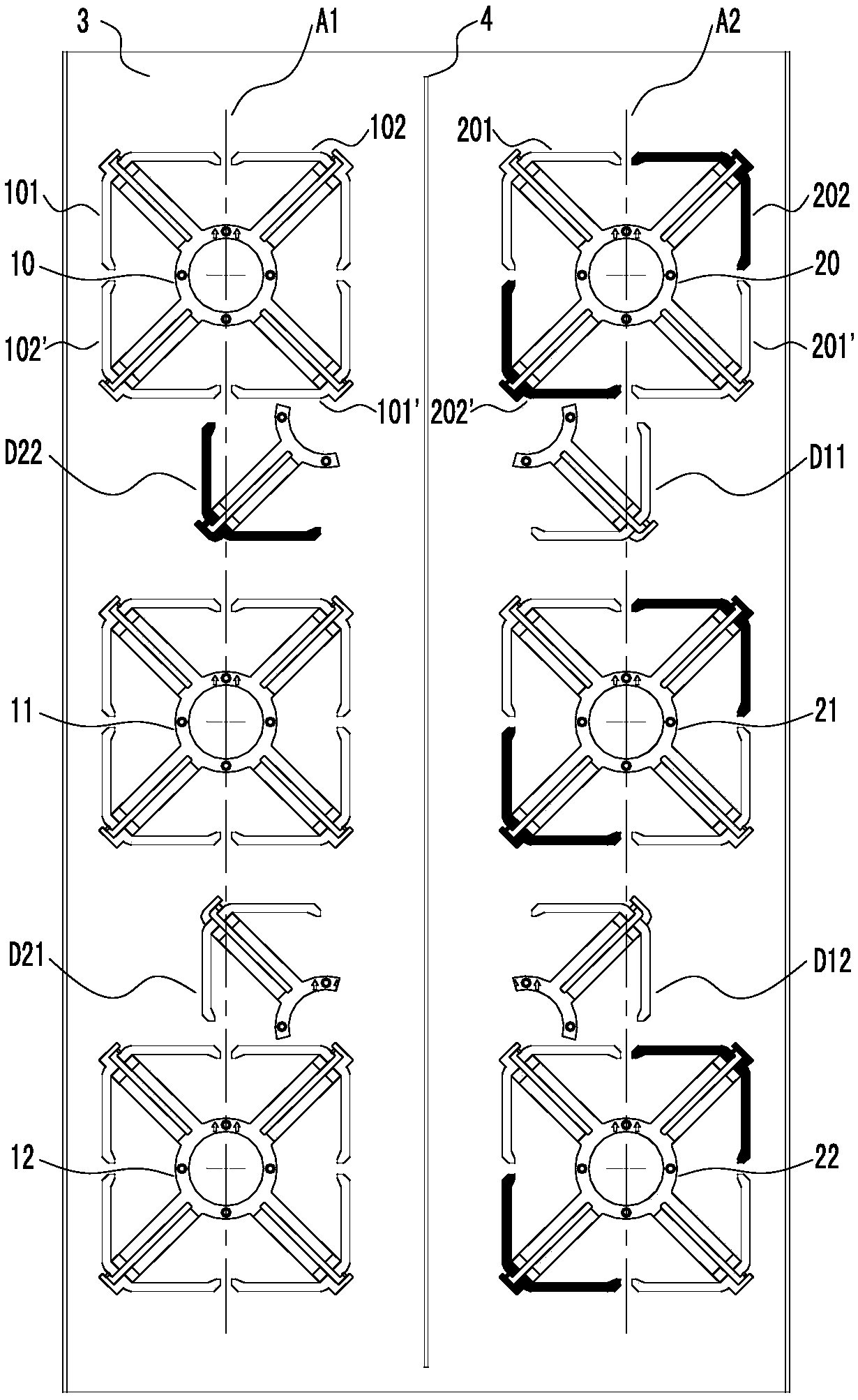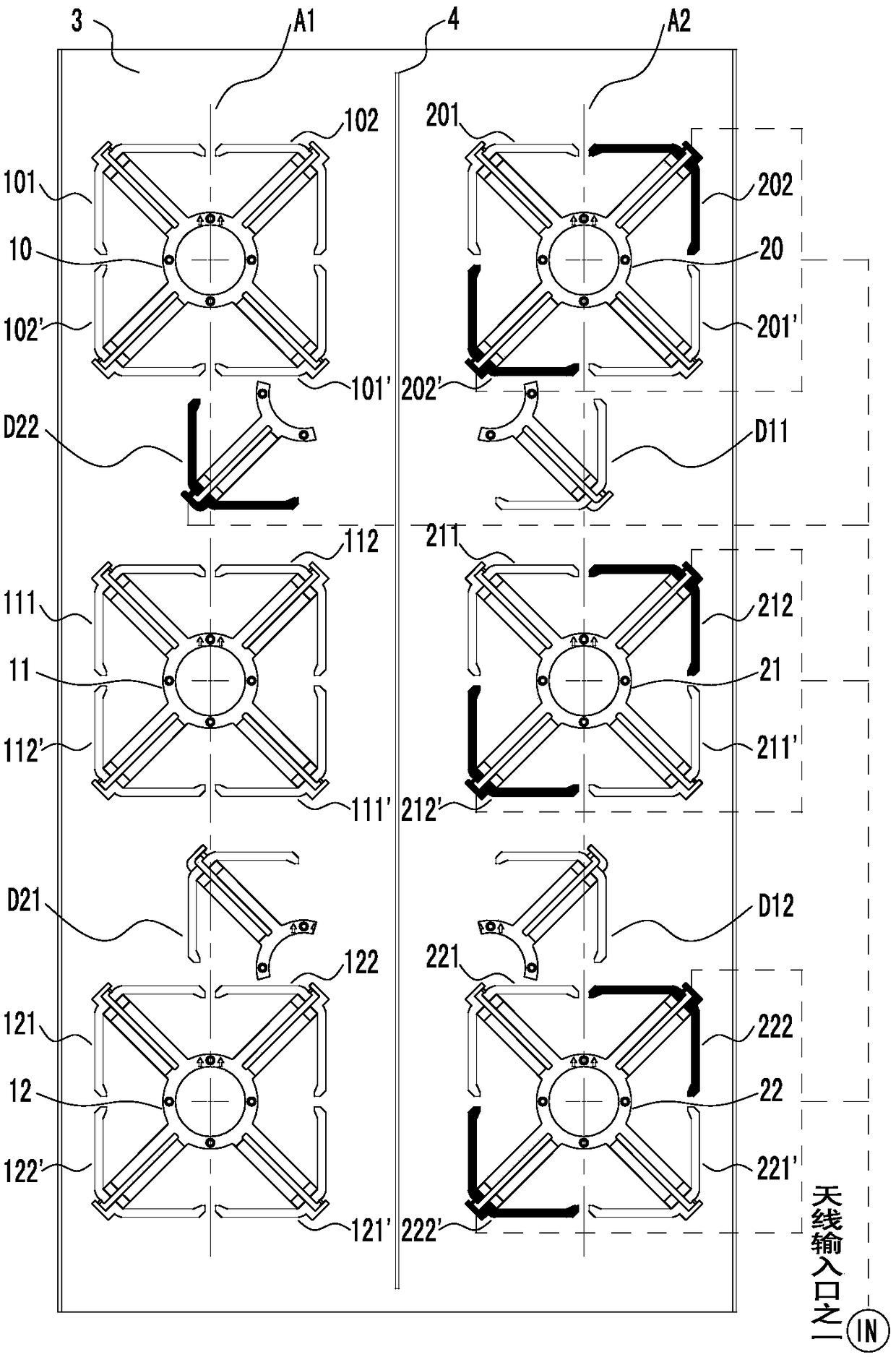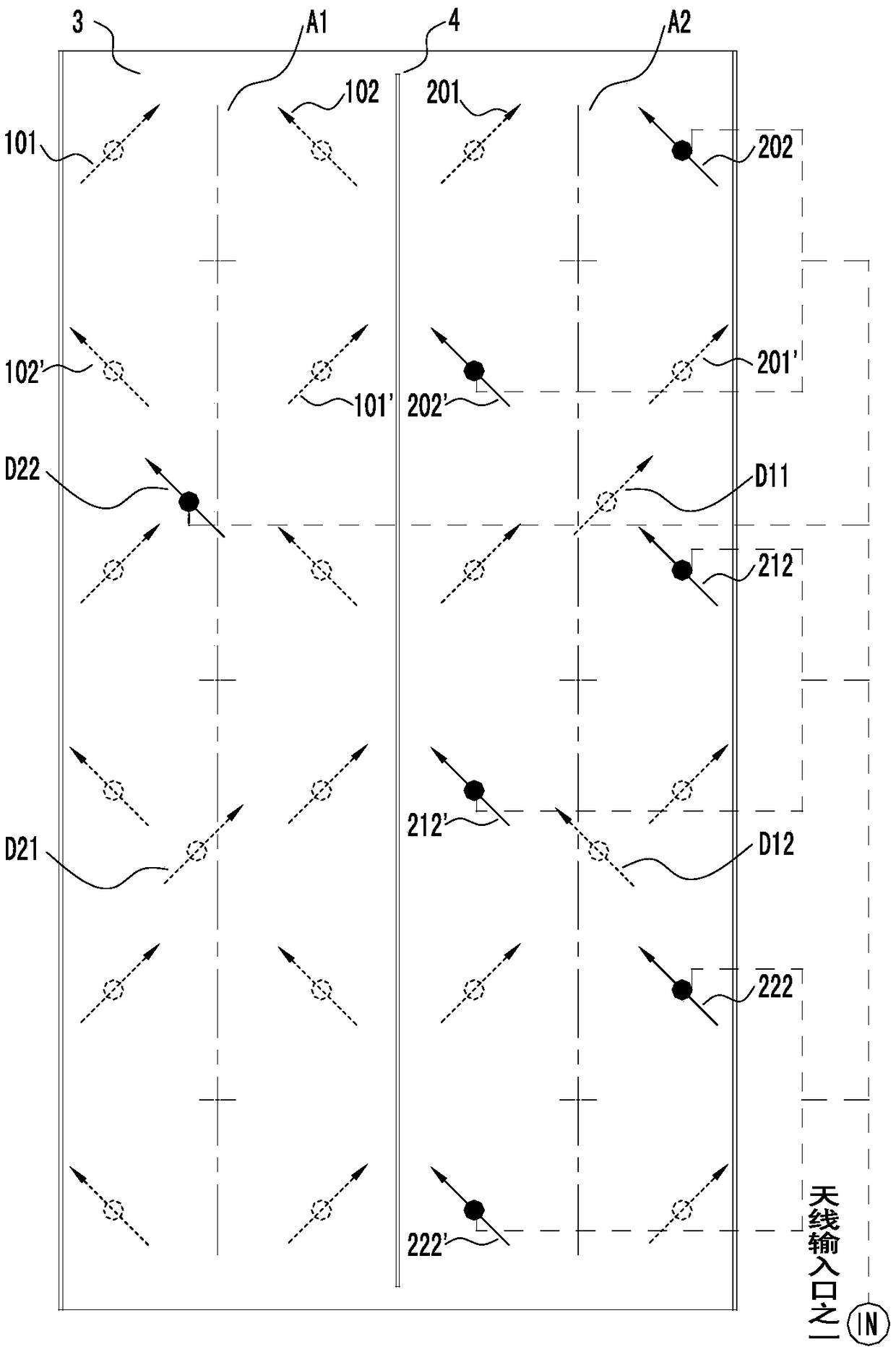Antenna array and multi-port antenna
An antenna array and antenna technology, which is applied to antenna arrays, antennas, antenna unit combinations with different polarization directions, etc., can solve the problems of increasing antenna width, reducing antenna gain, and deteriorating polarization isolation, so as to improve gain , the effect of improving symmetry
- Summary
- Abstract
- Description
- Claims
- Application Information
AI Technical Summary
Problems solved by technology
Method used
Image
Examples
Embodiment 1
[0033] see figure 1 , in this embodiment, the antenna array includes at least two radiating element arrays, and the column axes are A1 and A2 respectively. The radiation units in the first column include but are not limited to 10, 11, and 12 three dual-polarized radiation units. The second row of radiation units includes but not limited to 20, 21, 22 three dual-polarized radiation units. The tenth radiating element consists of two pairs of orthogonally polarized dipoles. Preferably, the 101 and 101' dipoles form the +45° polarization of the tenth radiating unit, and the 102 and 102' dipoles form the -45° polarization of the tenth radiating unit.
[0034] Such as figure 2As shown, the dotted line indicates the feed network connection of the right column of the antenna with -45° polarization. The pair of dipoles 202, 202' in the A2 array, the other pair of dipoles 212, 212', and the other pair of dipoles 222, 222' are fed in parallel, and the parallel feed is nested in D22 ...
Embodiment 2
[0041] The antenna array of this embodiment is similar to Embodiment 1, the difference is that:
[0042] Such as Figure 4 As shown, the pair of dipoles 202, 202' in the A2 array, the other pair of dipoles 212, 212', and the other pair of dipoles 222, 222' are fed in parallel, and the parallel feed is nested and arranged in the A1 array Inside the D22 dipole, the seven dipoles are connected through the feed network to form the right column of the antenna with -45° polarization. The position of the nested dipole D22 is between the radiation units 11 and 12 in the column A1; and the position of the nested dipole D22 in column A1 is between the radiation units 10 and 11 in the column A1. Obviously, nested dipole positions can be flexibly adjusted within adjacent columns.
Embodiment 3
[0044] The antenna array of this embodiment is similar to Embodiment 1, the difference is that:
[0045] Such as Figure 5 As shown, the pair of dipoles 202, 202' in the A2 array, the other pair of dipoles 212, 212', and the other pair of dipoles 222, 222' are fed in parallel, and the parallel feed is nested and arranged in the A1 array D22, D22' dipoles inside, the eight dipoles are connected through the feed network to form the right column of the antenna with -45° polarization.
[0046] In the same way, by parallel feeding the pair of dipoles 201 and 201' in the A2 array, the other pair of dipoles 211 and 211', and the other pair of dipoles 221 and 221', the parallel feeding arrangement is nested in A1 The D21 and D21' dipoles in the array, the eight dipoles are connected through the feed network to form the +45° polarization of the right column of the antenna.
[0047] Similarly, the dipoles D11, D11' are fed in parallel with the dipoles 101, 101', 111, 111' and 121, 121...
PUM
 Login to View More
Login to View More Abstract
Description
Claims
Application Information
 Login to View More
Login to View More - R&D
- Intellectual Property
- Life Sciences
- Materials
- Tech Scout
- Unparalleled Data Quality
- Higher Quality Content
- 60% Fewer Hallucinations
Browse by: Latest US Patents, China's latest patents, Technical Efficacy Thesaurus, Application Domain, Technology Topic, Popular Technical Reports.
© 2025 PatSnap. All rights reserved.Legal|Privacy policy|Modern Slavery Act Transparency Statement|Sitemap|About US| Contact US: help@patsnap.com



